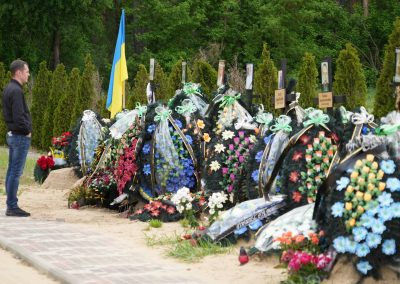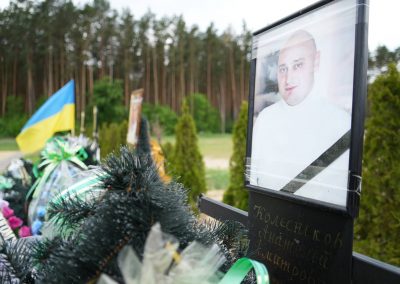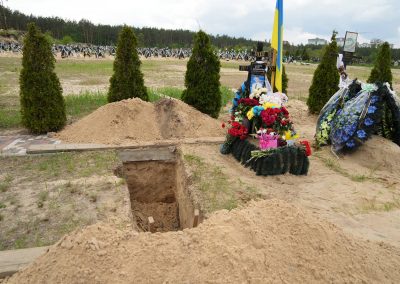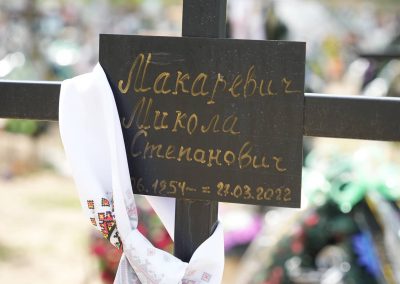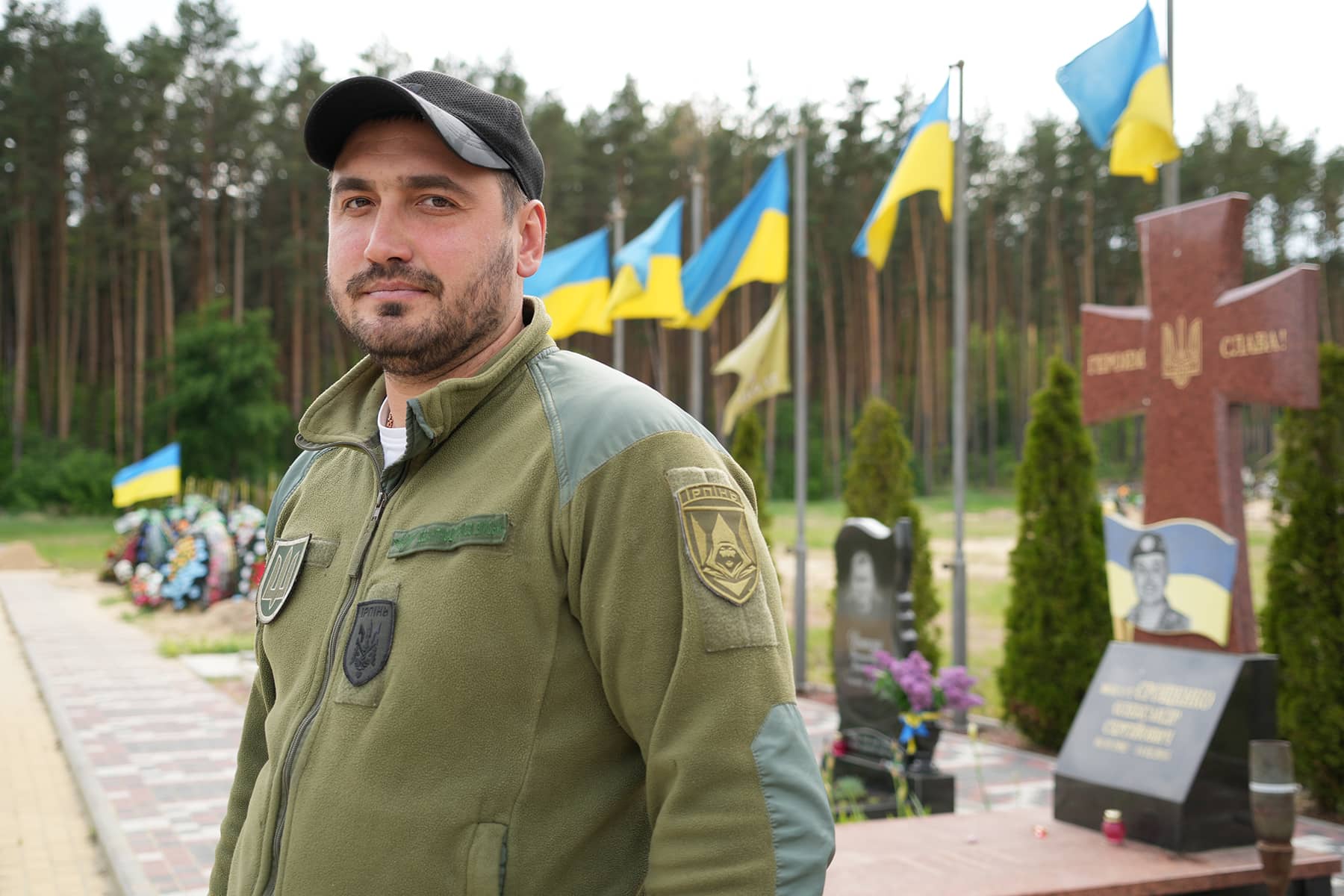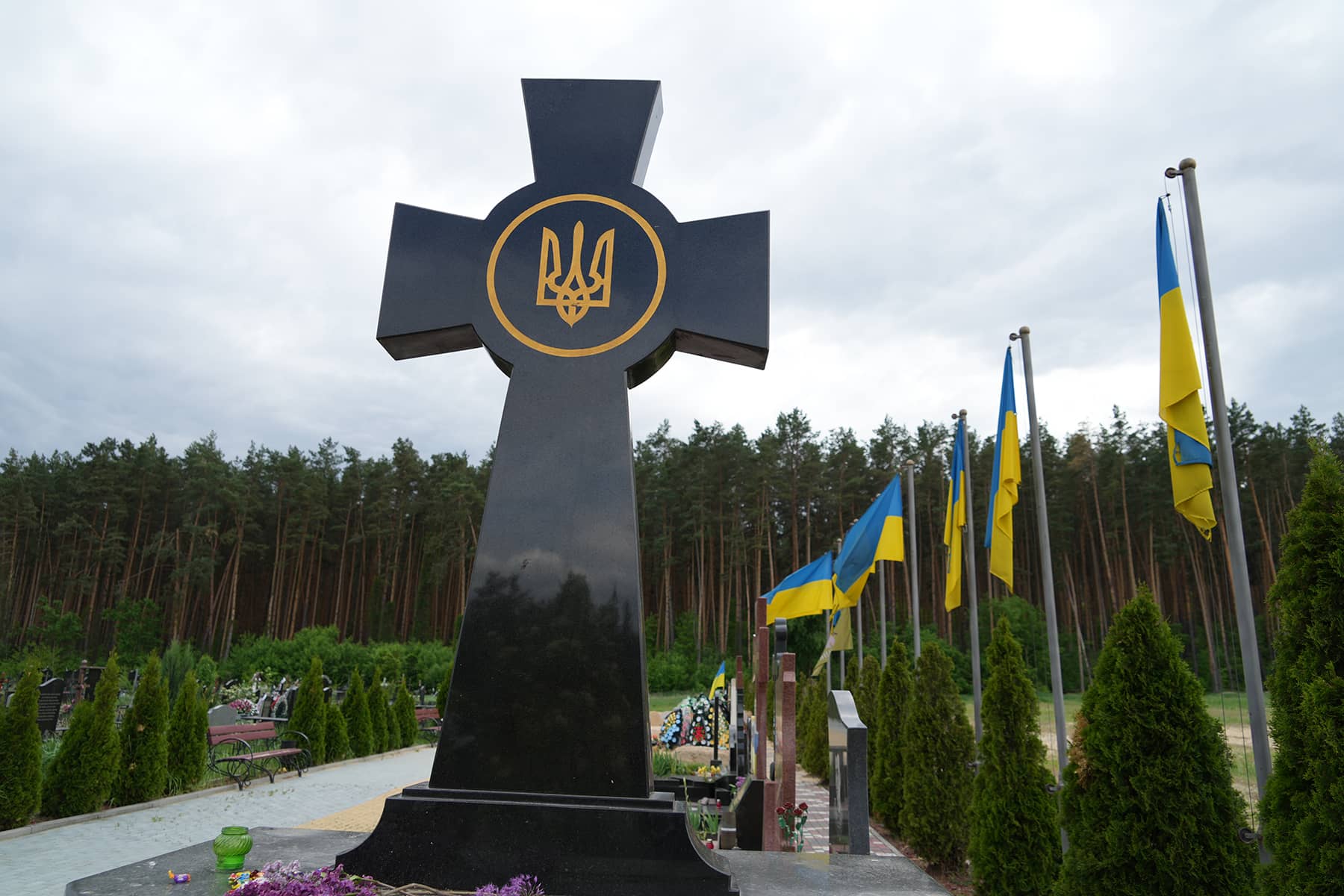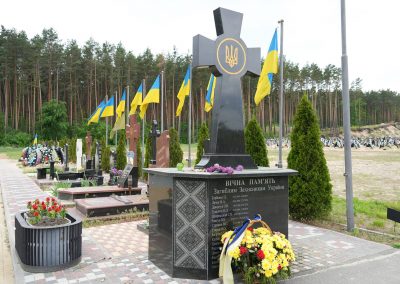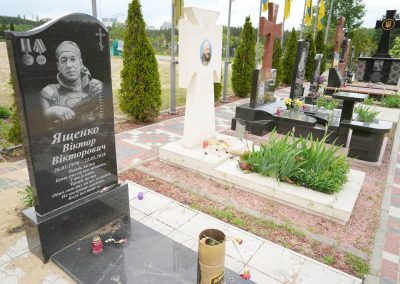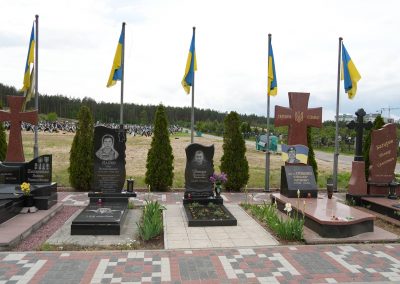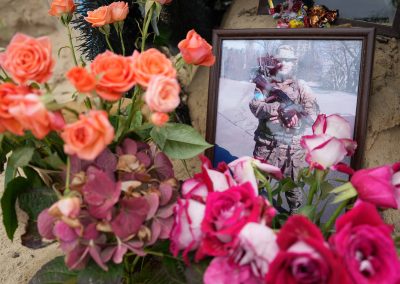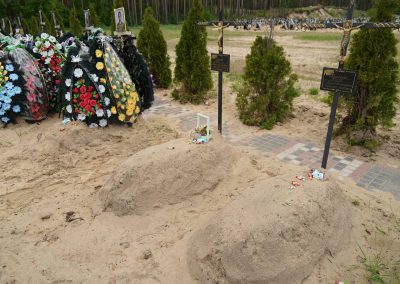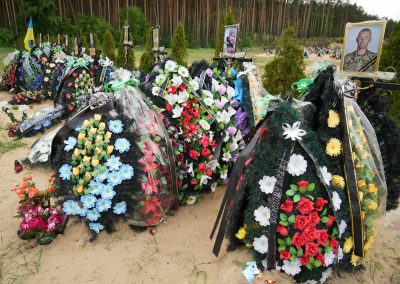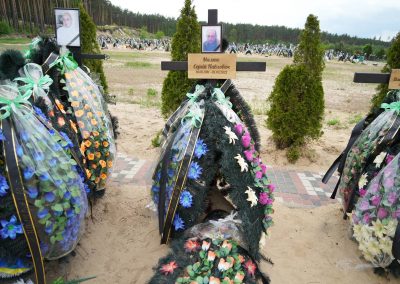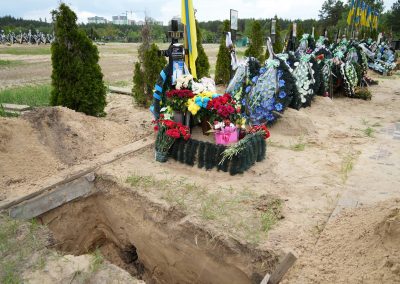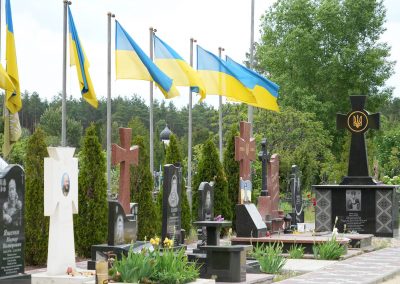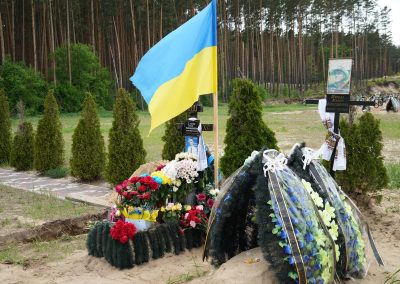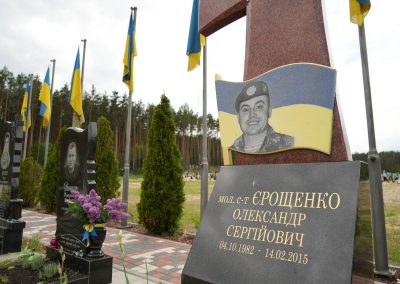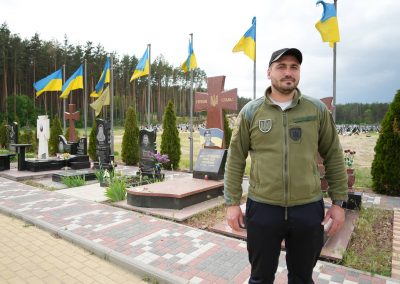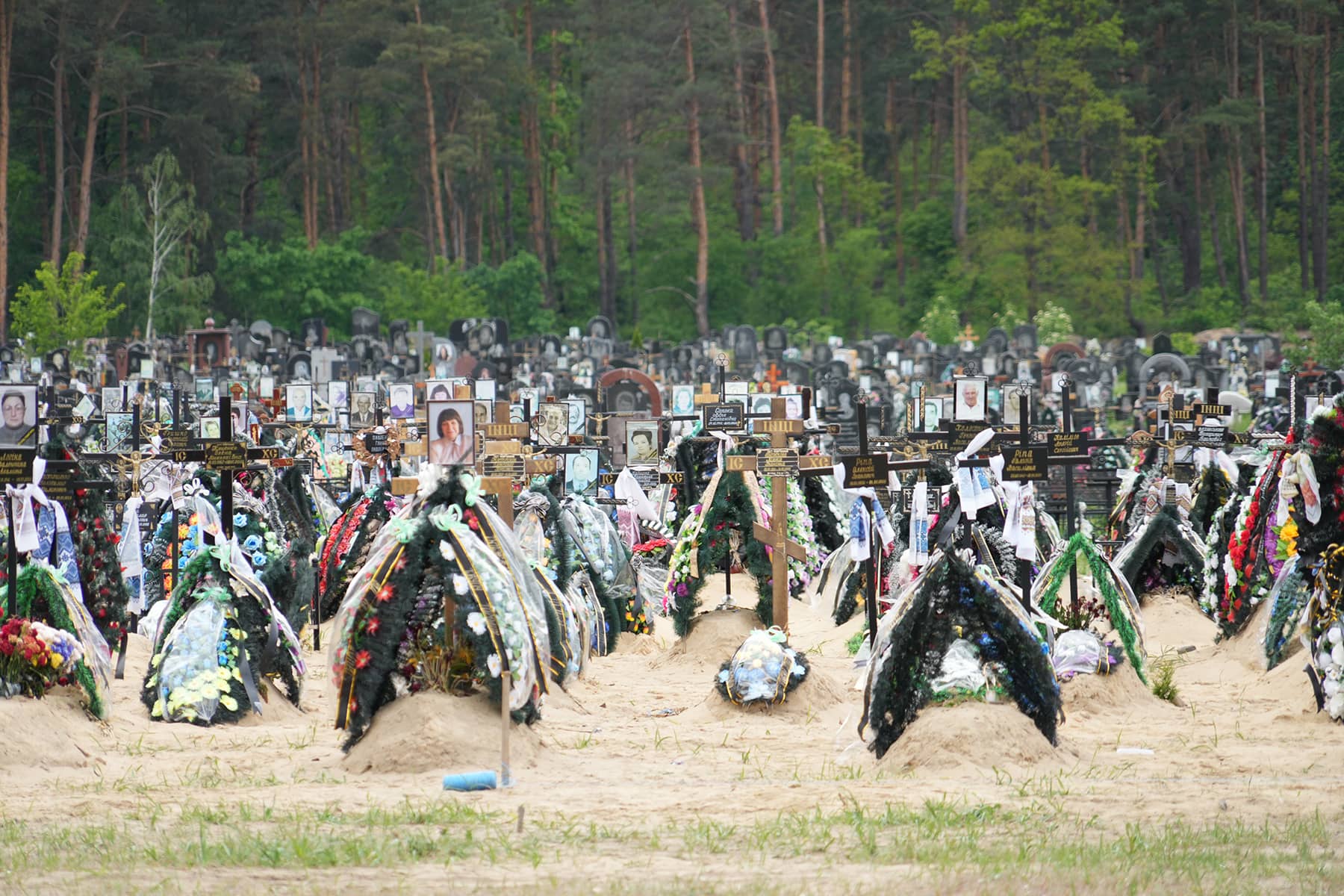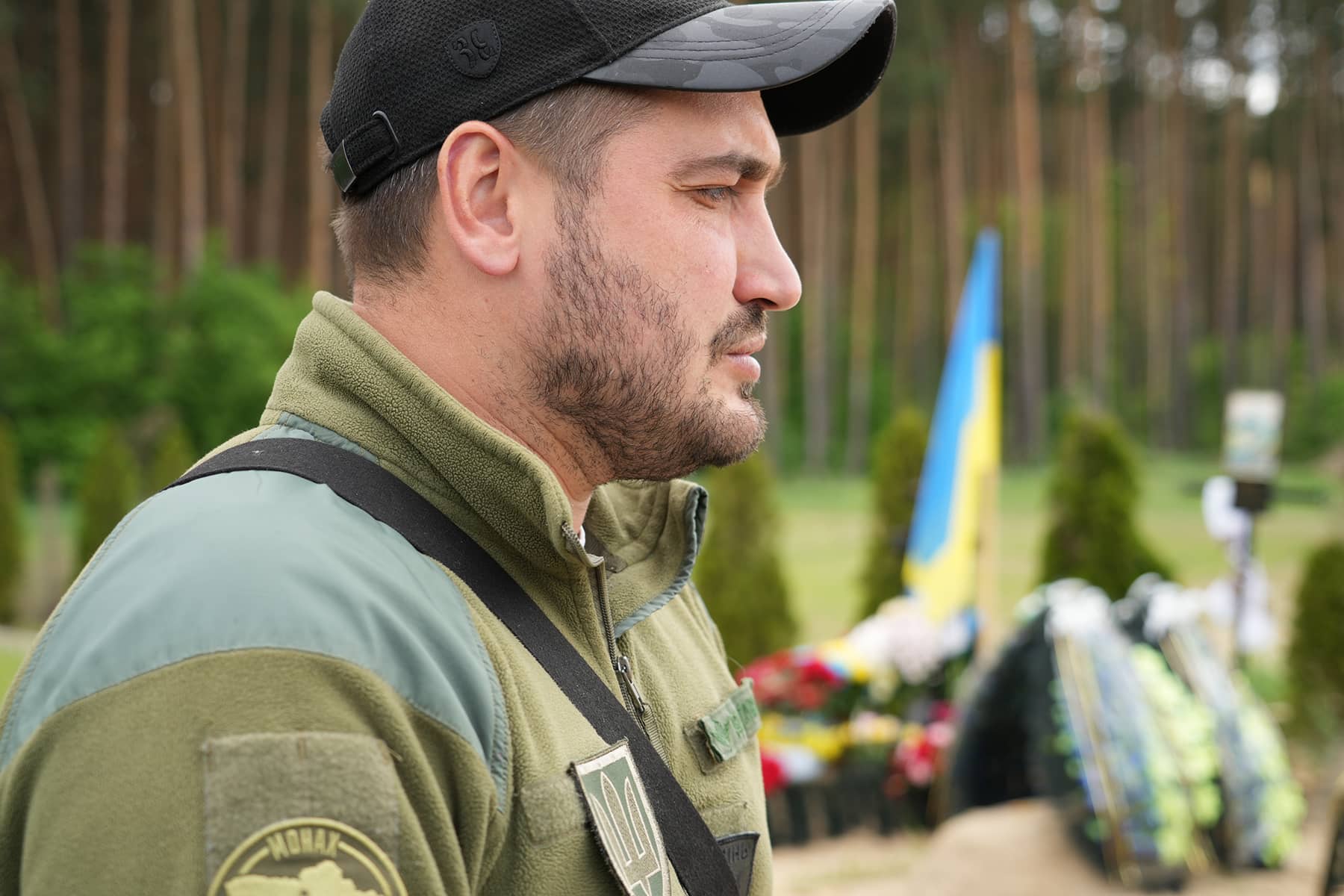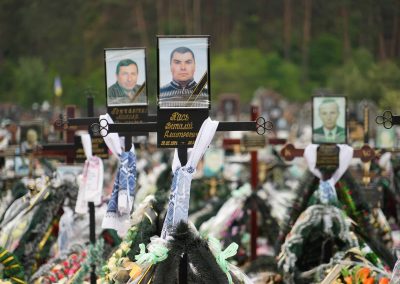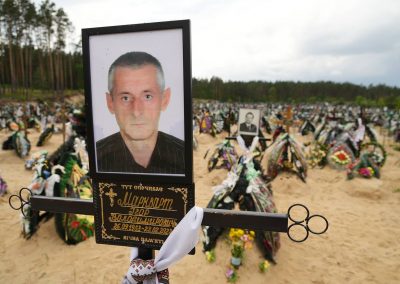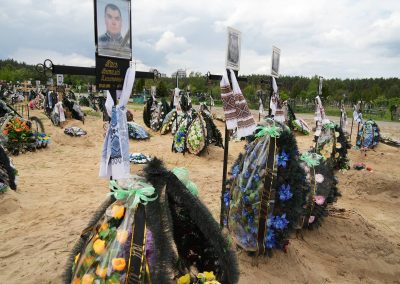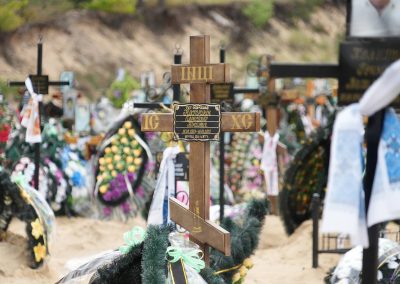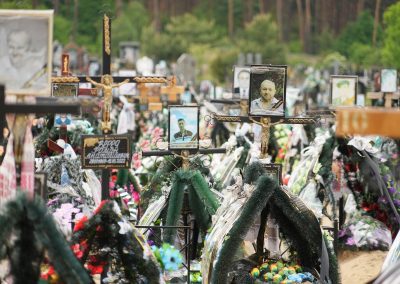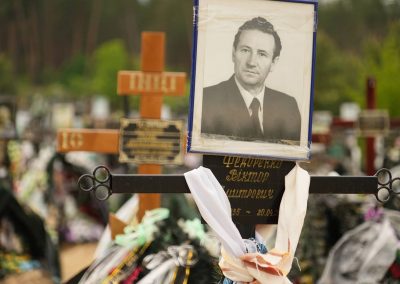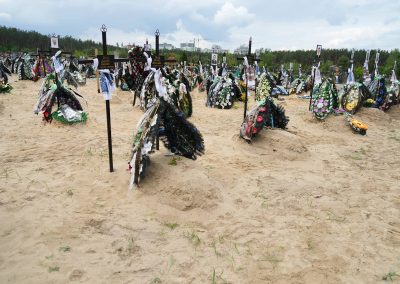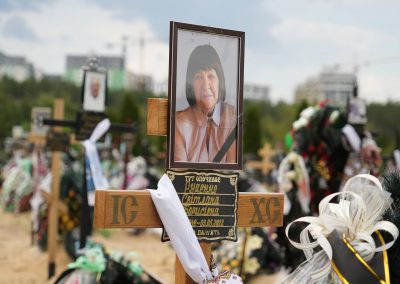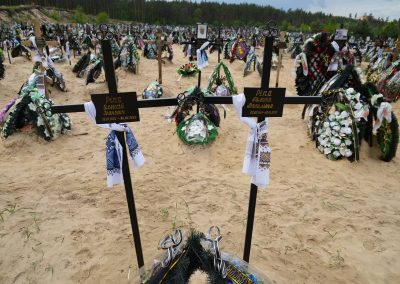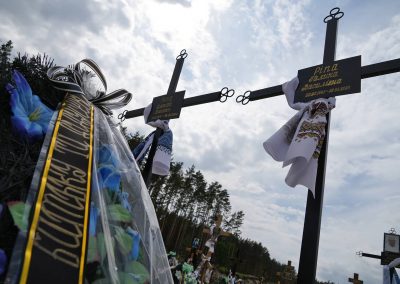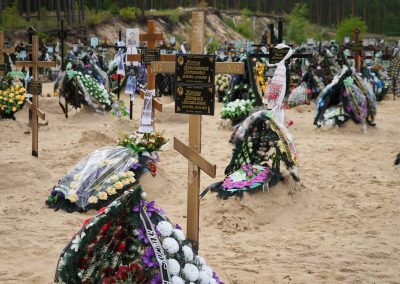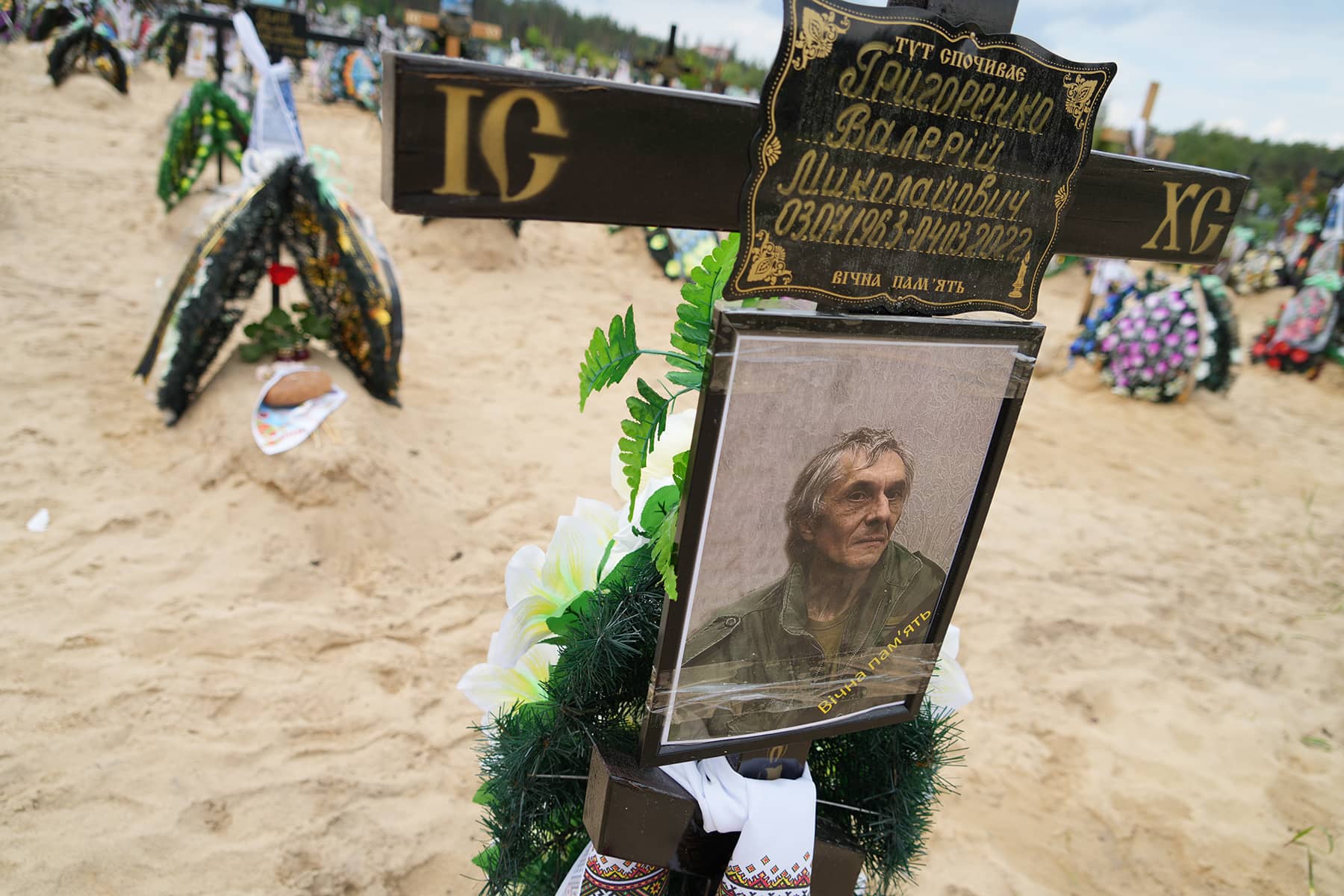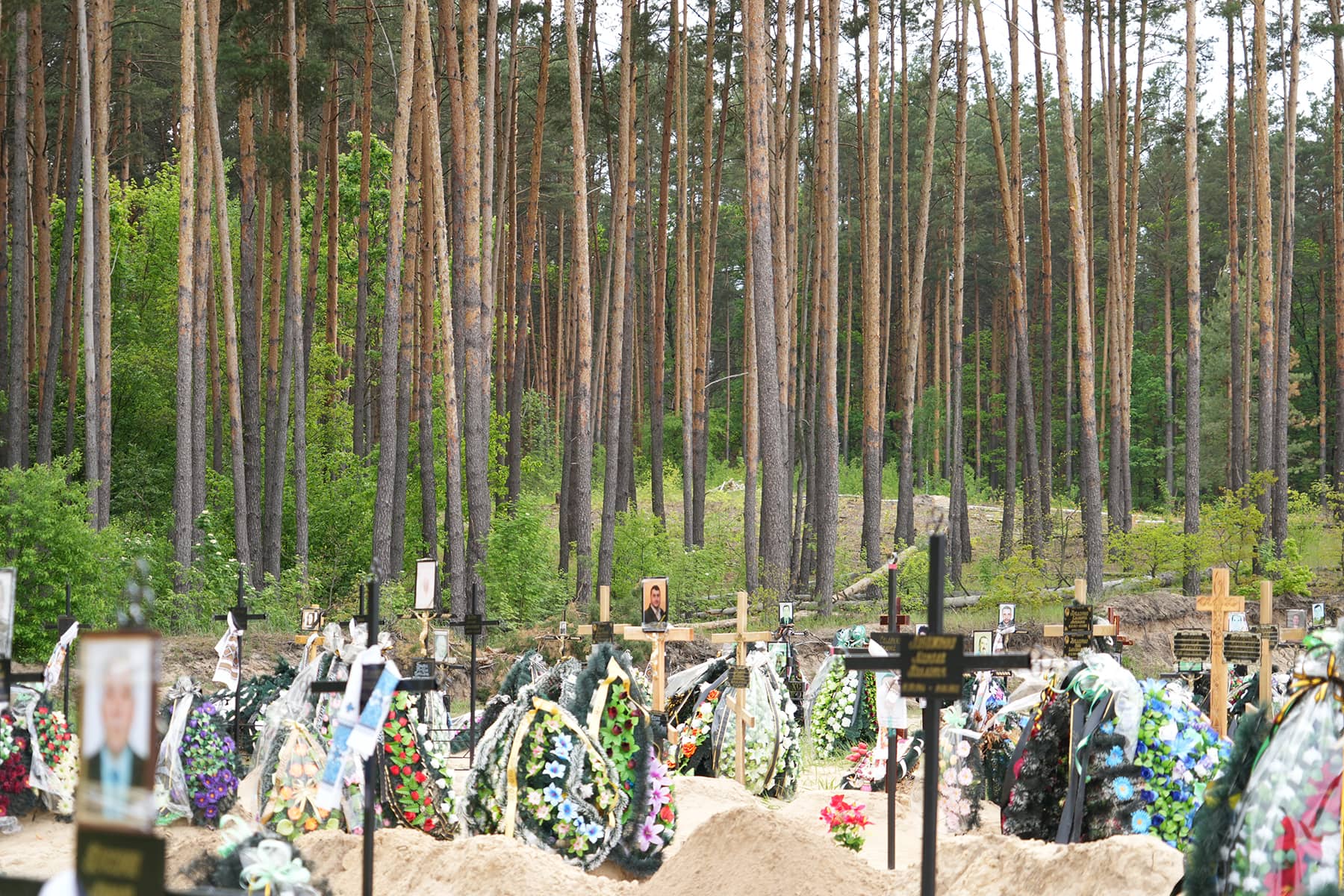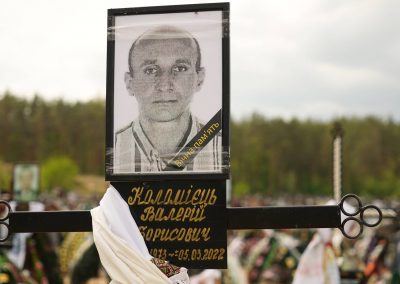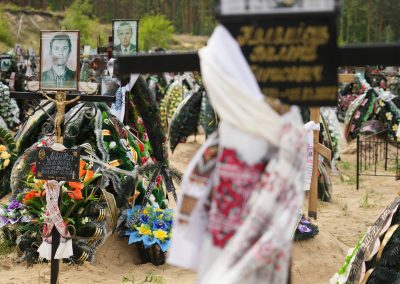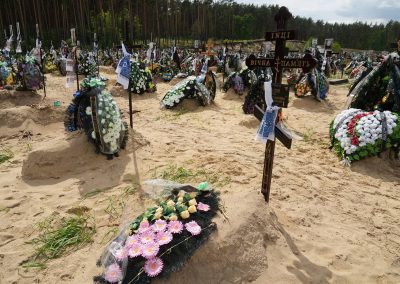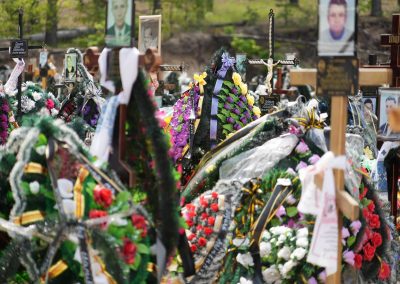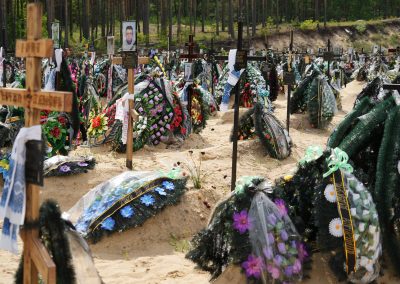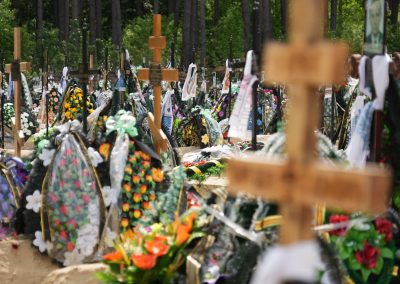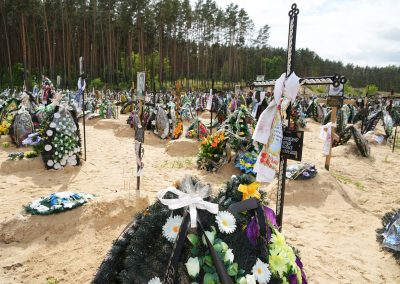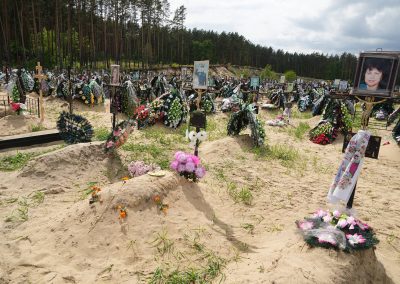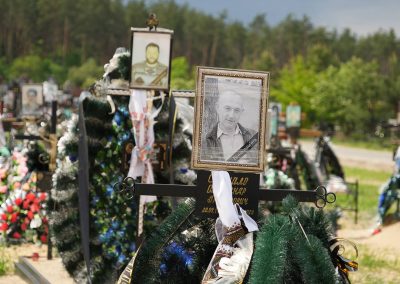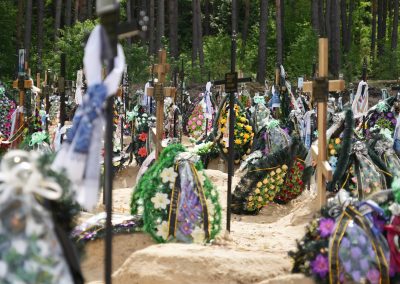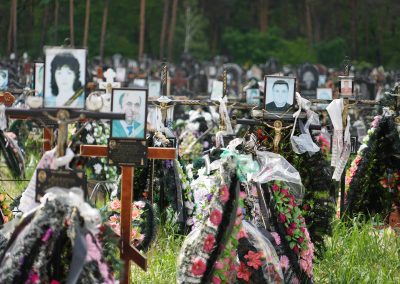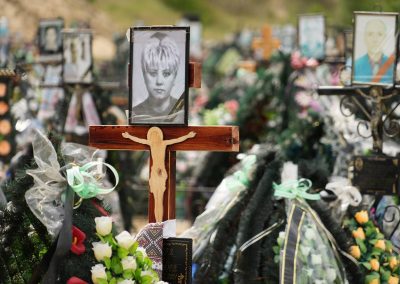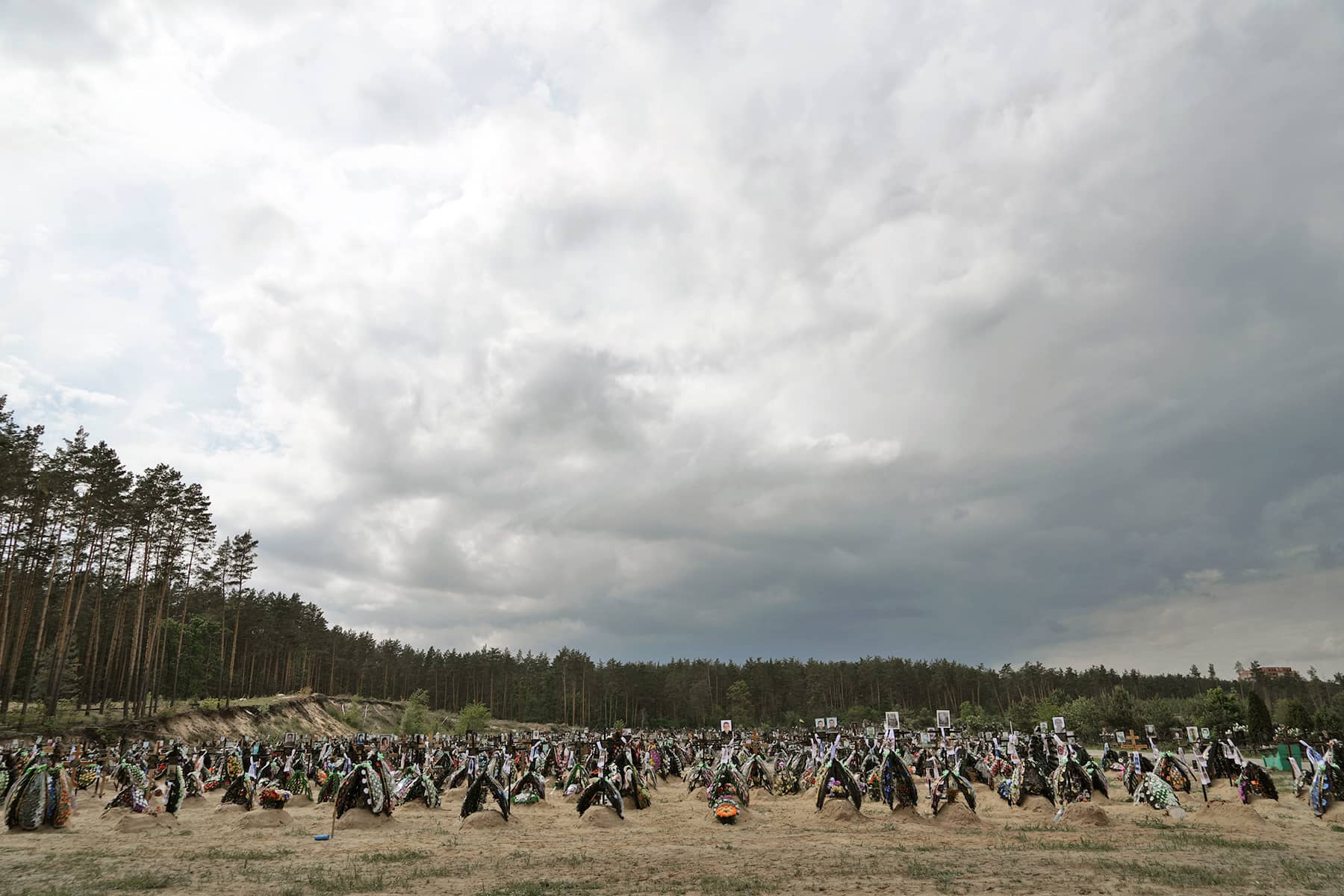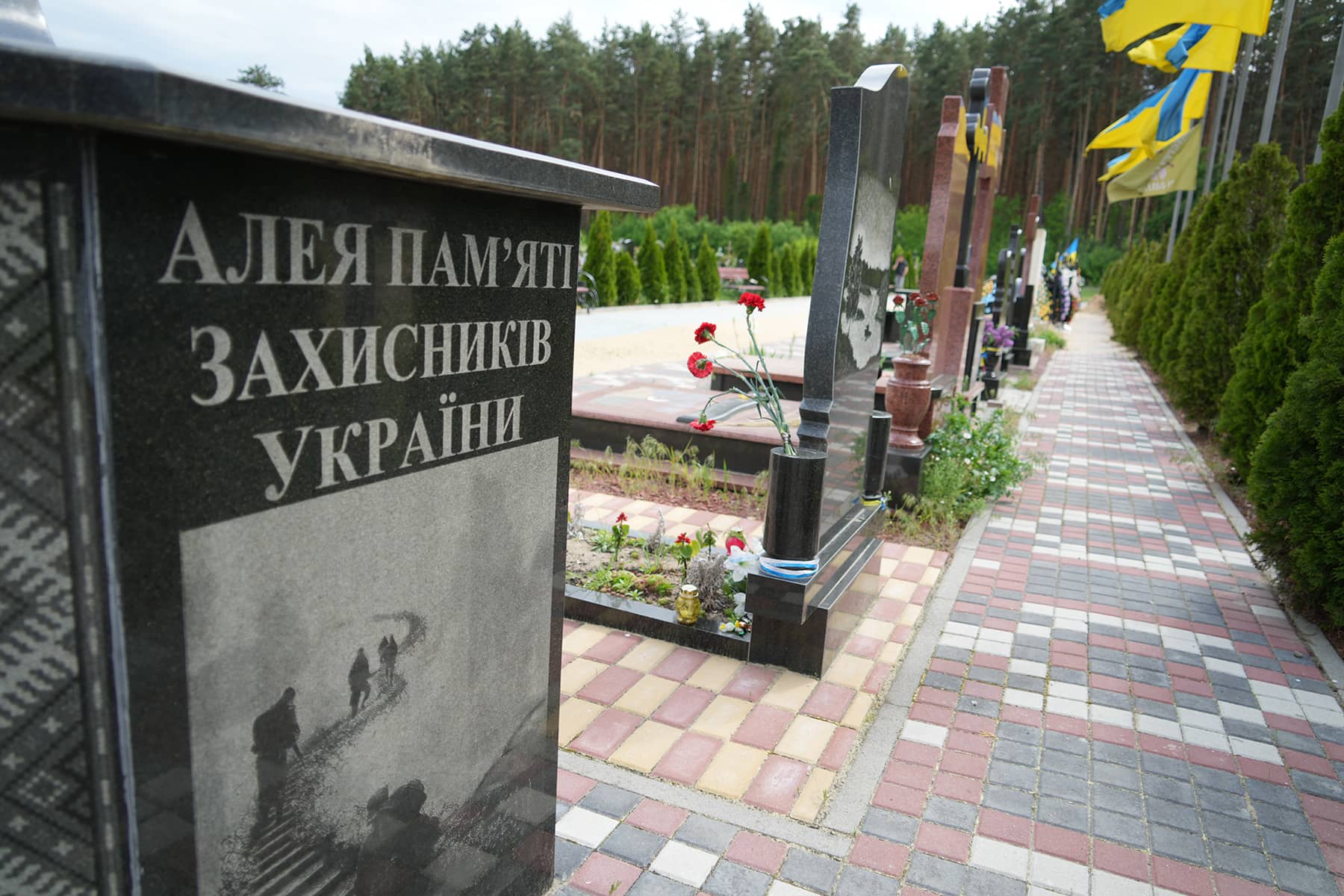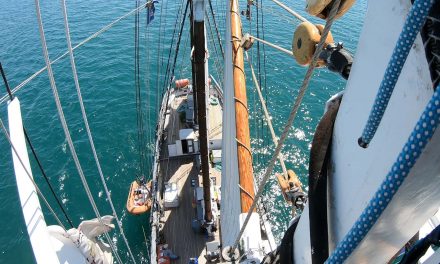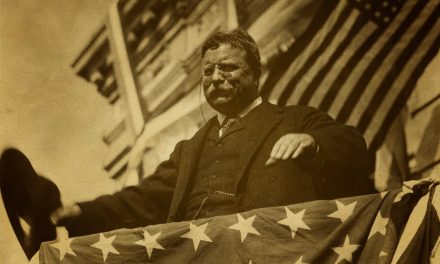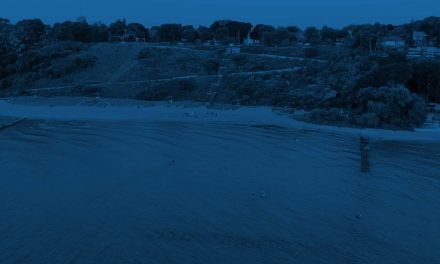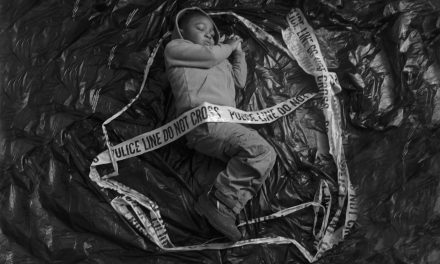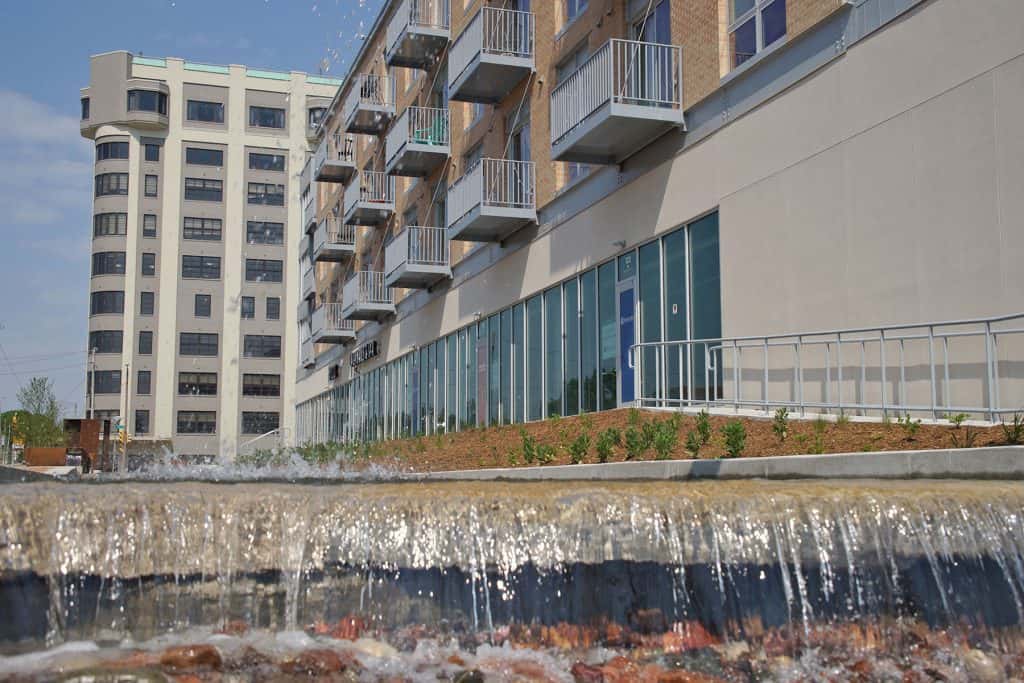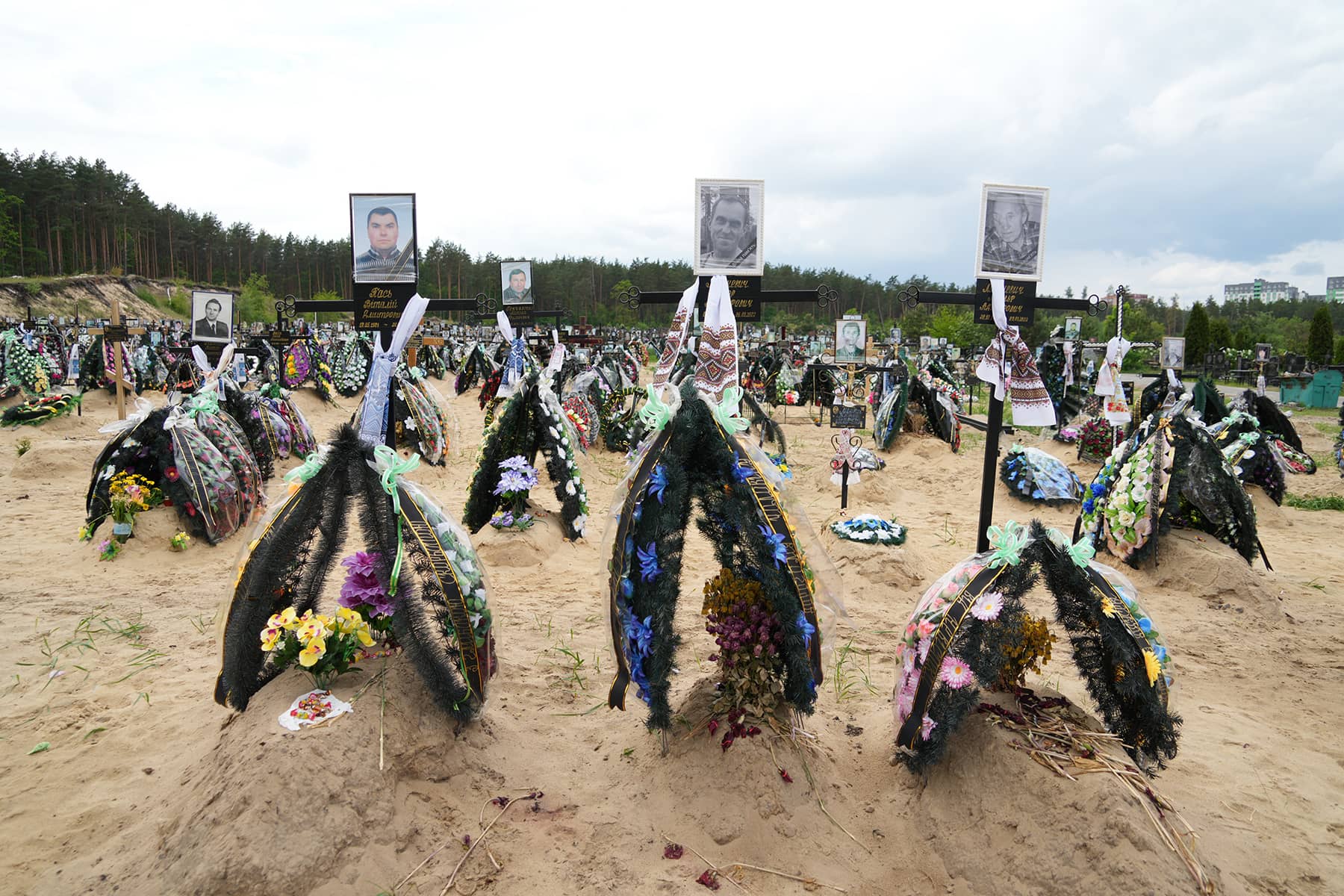
By the time Milwaukee Independent’s team of journalists arrived in Irpin, city residents who had been killed in March at the start of Russia’s unprovoked invasion had been buried for weeks. That process did not begin until the city was liberated, after a key battle that halted Putin’s plans to capture Kyiv, a mere 16 miles south. But the work to honor the dead was only beginning
Before being driven out of the north by the Ukrainian military and local Territorial Defense forces, Irpin had been a strategic battle ground. Positioned on the west side of the Irpin River, the city was a gateway to the capital of the independent nation. It was also where the plan of Russia’s dictator unraveled, forcing Putin to withdraw and relocate his campaign of genocide to Ukrainian territories in the east.
With a pre-War population of around 60,000, Irpin’s civilian population suffered heavy losses. Frustrated with their stalled military effort, Russian troops deployed a strategy of terror against ordinary people. As a result, 269 residents were killed.
By mid-April, a cemetery on the outskirts of Irpin became one of the centers of international investigations into Russian war crimes. Forensic teams reviewed many of the human remains from dozens of freshly dug graves.
The Milwaukee Independent Team spoke with Petro, the graveyard supervisor of Irpin, about the process of managing the catastrophic aftermath of the Russian brutality.
“Before the war our situation was calmer. There were not any mass burials, or the tragic outcomes since the occupation of our city,” said Petro. “As of today, we have over two hundred people buried in Irpin’s cemetery who were almost all mercilessly killed. They were shot, tortured, hanged, or run over with tanks.”
On the day of our meeting, Petro pointed to the graves of thirteen soldiers who had been buried. Each had died protecting Irpin from the Russian invasion. Some were volunteers who joined the Territorial Defense Battalion. Petro mentioned that while the civilians recently buried were adults, many who died were also children.
He described how the gravediggers risked their lives to conduct their work while the area was shelled by Russian artillery.
“We had burials happening even when the territory of our cemetery was occupied. We had tanks right here,” said Petro. “The last burial that took place before liberation was on March 16th by the gravediggers. Those boys are the real heroes because it was impossible to even walk here. A woman whose husband died from cancer in her hands asked us to conduct the burial. She did not want to bury him in their yard.”
On March 28, Irpin’s Mayor Oleksandr Markushin and Petro decided to begin picking up the dead bodies littered across the city and restart burials.
“We had some neighborhoods littered with corpses, not to mention the cars that were covered with gunshot holes and the dead bodies of people and kids inside,” said Petro. “We started to collect them from the 30th of March to the 10th of April. We gathered some volunteers and had some men drive around and collect these bodies with the help of police and an explosives technician. He would check for explosive materials and after ensuring safety, men would go pick the bodies up. It was a slow and dangerous process, but were able to clean the streets.”
There were around 180 bodies scattered around Irpin, with others buried in their yards.
“We knew about some people who had been trying to escape the war, and we found them shot in their cars,” said Petro. “Others were buried, and some people would dig rough graves just so that bodies weren’t in their cars or on the streets. Everyday we were receiving calls about where people were buried. We would drive out and exhume them, so that autopsies could be performed to discover their identities and how they died.”
A priest attended funerals in the cemetery for the first month, but it soon become too overwhelming.
“We had a group of people who were in charge of taking bodies to the morgue for identification,” said Petro. “At first, we had 5, 6, 7 burials a day. We placed crosses on each casket and conducted holy rites. The process was around eight hours of work, and it was too much for priests. Now, it’s easier and they can bless the caskets.”
Petro explained that it was not always an easy job to do, and was often psychologically difficult. Sometimes bodies were destroyed, eaten by animals, or there were only parts of the body. He and team members had to walk around collecting different body parts.
“We had to be spiritually strong, as it was a very difficult task,” added Petro. “Even now at this moment, I still get calls. Sometimes, when relatives come back to their houses, they make a discover or want to exhume their yards.
Many damaged buildings in Irpin remained untouched, because of the lack of resources to methodically clear the vast spaces and heavy wreckage of mines. At a nearby shopping mall that was destroyed, signs were posted to stay clear because it was known to contain explosives. But due to the nature of the devastation, Petro’s team had not been able to enter the rubble and search for any dead.
© PHOTO NOTE: All the original editorial images published here have been posted to the Facebook page of Milwaukee Independent. That collection of photos contains the MI copyright and watermark for attribution, and may be used for private social media sharing. Do not download and share images directly from this page. mkeind.com/facebook
Series: Reports from Ukraine
- Reports from Ukraine: Traveling from Milwaukee to a country at war just to take a vacation from America
- Images from Ukraine: Latino artist travels to Irpin to paint mural inspired by "Echoes of Guernica"
- Images from Ukraine: Irpin residents welcome reissue of Russian Warship Stamp as latest sign of victory
- Stories from Ukraine: Wandering in the ruins of a shattered life after surviving Russia's invasion
- Images from Ukraine: Similar to the Alamo, martyred cities bought precious time to save a nation
- Stories from Ukraine: Tent camp offers shelter for displaced residents until Irpin can rebuild lost homes
- Images from Ukraine: Graveyards of Russian war machines show the scale of Putin's failure to seize Kyiv
- Images from Ukraine: Following the invasion convoy's 40-mile route and exploring an abandoned base
- Stories from Ukraine: Illegal weapons and proof of Russian War Crimes easily seen along streets of Irpin
- Images from Ukraine: How Irpin’s cemetery processed the staggering massacre of its local citizens
- Stories from Ukraine: Healing remains slow as Borodyanka residents recover from occupation
- Images from Ukraine: The deep scars of war remain visibly etched across the landscape of Borodyanka
- Interview with Oleksandr Markushin: Mayor of Irpin and the hero of a Hero City
- A Meeting of Sister Cities: Former and current Mayors of Irpin ask Milwaukee's business community for help
- Stories from Ukraine: Having a shared purpose helped Irpin's leaders protect the city and stop the invaders
- Stories from Ukraine: How Milwaukee helped a bakery feed hungry survivors in Bucha with fresh bread
- Stories from Ukraine: Bucha resident recalls how Russians turned neighborhood into a street of death
- Stories from Ukraine: How a mass grave of executions overshadowed accountability from Bucha’s leadership
- Images from Ukraine: Putin’s attack on Babyn Yar is a painful reminder of the broken vow of “Never Again”
- Images from Ukraine: An unexpected encounter with Jewish history and the bloody legacy of persecution
- Images from Ukraine: Listening to timeless voices of ethnic heritage etched in stone at Lychakiv Cemetery
- Images from Ukraine: The experience of attending a military funeral in Kyiv while children died in Uvalde
- Images from Ukraine: Stepping out of the fog of war to see the beauty of faith in ancient places of worship
- Images from Ukraine: The cities of Kyiv and Lviv were divided by history but remain united in identity
- Stories from Ukraine: Anya Nakonechna shares why the Lviv Opera is a symbol of her nation’s culture
- Images from Ukraine: A folk village where visitors can experience the life of past generations
- Images from Ukraine: Signs of renewal sprout from under Irpin’s rubble as city looks to the future
Oleh Pinta
Oleh Pinta and Halyna Salapata
Lее Mаtz
Milwaukee Independent editorial team for this special series: (UKRAINE) Lee Matz, photojournalist; Oleh Pinta, translator / reporter; Yaroslav Zdyrko, security / videographer; (MILWAUKEE) Halyna Salapata, logistics / translations.
Milwaukee Independent has reported on the situation in Ukraine since it was invaded on February 24. Coverage originally began with reactions and rallies from the local Ukrainian American community, and relationships with Milwaukee’s sister city of Irpin. Through partnerships and good journalism, sources were developed that enabled Milwaukee Independent to publish developments about the unprovoked war in realtime. In late May, a team from Milwaukee Independent spent nearly two weeks on the ground in Ukraine. The award-winning daily news magazine was the first and, at the time, only media organization to send staff into the country since the war began.
Reports from Ukraine: An extensive news series by Milwaukee Independent from a country at war

